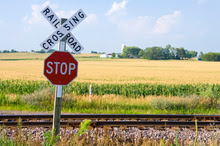Failure of railway crossing regulations caused train crash
By Abby Gillies
3:31 PM Thursday Sep 13, 2012 New Zealand Herald
 |
| Photo / Thinkstock |
A New Zealand railway crossing
north of Wellington where a bus was hit by a freight train last year failed to
comply with regulations, a transport investigation has found.
Six passengers and the driver got
out of harm's way only moments before the train smashed into the
"super-low-floor" bus after it became stuck on the track on Beach Rd
in Paekakariki on October 31.
The crossing and a short section of
road leading up to the intersection was not compatible with long and low road
vehicles as required by NZ Transport Agency rules, the Transport Accident
Investigation Commission has found.
The bus became stuck on two of the
three sets of tracks and could not be freed by the driver who tried several
methods, said the report.
There was also not enough
"stacking distance" for the bus, or other vehicles longer than 10 meters
to stop at the intersection and remain clear of the clear of the tracks, the
commission found.
Another 251 crossings have similar
stacking distance issues.
The report has made a number of
recommendations about the layout, profile and stacking distance issues at the
Beach Rd crossing and others around the country as a result of the
investigation to improve safety.
It also said drivers of large road vehicles should should carry
the National Train Control Centre emergency telephone number so they can alert
the train controller in any similar situation.
Peter’s
Piece
The New Zealand Transport Agency and the rail operator appear
not to be on the same planet as drivers of commercial vehicles.
There is a law requiring drivers of buses, and trucks carrying
dangerous goods, to stop before crossing tracks that do not have alarms and
barrier arms, but at most crossings that is impractical and dangerous.
At many crossings, once a large vehicle is stopped the driver is
unable to get a clear view of the tracks. With many crossings a driver can have
a good view while approaching but can be blind once stopped because of crossing
angles and obstructions.





No comments:
Post a Comment